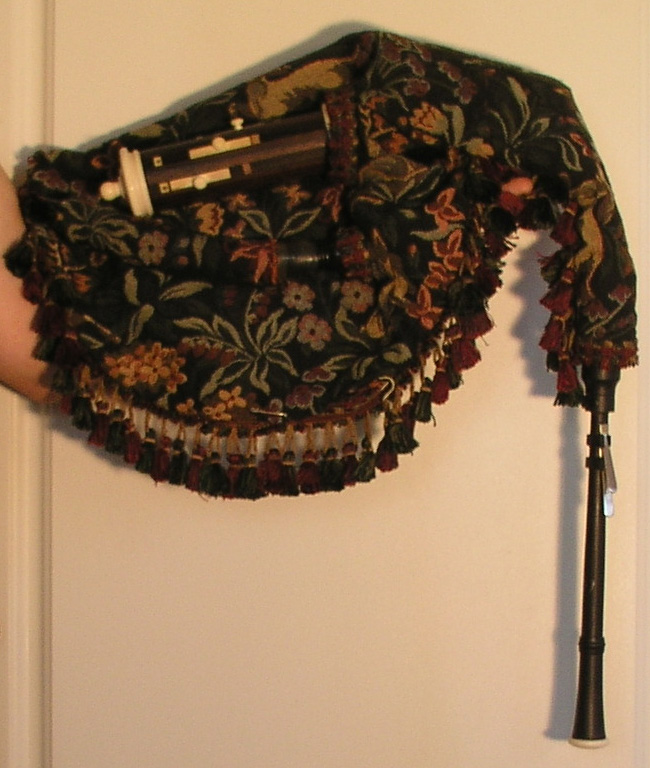| |
 |
RECORDERS produce a flute-like sound when air passes through the windway and splits against the edge of a wooden lip. Unlike later Baroque recorders, Renaissance recorders have a fuller sound and a more restricted range. |
 |
CRUMHORNS and CORNAMUSES produce a soft buzzing sound. On both, the double reed is protected inside a wooden cap. The crumhorn's "J" shape is purely ornamental. Cornamuses are straight and produce basically the same sound. Both have a restricted range of slightly over one octave. |
| VIOLA DA GAMBA was the primary bowed stringed instruments in the Renaissance. Unlike members of the violin family, viols have six strings and frets. Regardless of size, all viols are held between the legs. The Italian term for viol is viola da gamba. |
 |
| The CORNETTO combines the finger holes of a recorder with the cupped mouthpiece of a trumpet. The result is an instrument with a trumpet-like sound and some degree of dynamic flexibility. It has a two octave range. |
 |
 |
SACKBUTS are the ancestors of the trombones. Their smaller bell gives them a softer sound than the modern trombone. Alto, tenor and bass sackbuts are usually combined with the cornetto to provide a four-part ensemble. |
| The SHAWM is one of the loudest Renaissance instruments. It uses a double reed, held directly in the mouth. Shawms are still found in ethnic cultures throughout the world. Shawms died out in Europe after the Renaissance and were replaced by the oboe family. |
 |
 |
SCHREYERPFEIFEN, meaning screaming pipe (aka. rauschpfiefe) are shawms to which a protective reed cap has been added. Though the schreyerpfeife retains the shawm's loudness, it lacks the volume flexibility and range of a shawm. |
|
Bagpipe is another capped double reed, with several drone pipes at various pitches
|

|
Musette is a specialized French court bagpipe, invented for the court ballets of Henri III (before 1587), used as a musical representation of country life and in pastoral scenes with shepherds. It is a petite bagpipe with a rich sound conferred by four drones that can be turned on or off at will, a unique feature of this bagpipe. The Renaissance musette evolved into the very popular Baroque musette of the court of Louis XIV and survived until the French revolution. The musette is a very rare instrument, with only one surviving original of the Renaissance type, andc only a few drawings; from these, this instrument was commissioned to be made by the only maker in the world, Paul Beehuisen. |
|
Basanello, is a double reed
|
|
Serpent, is a large cornetto shaped in the form of a "S"
|
| |